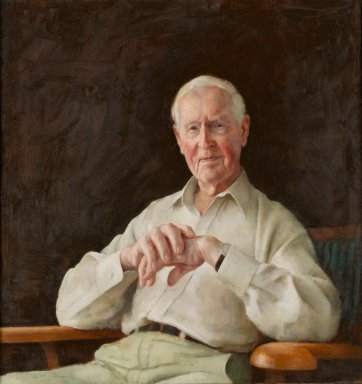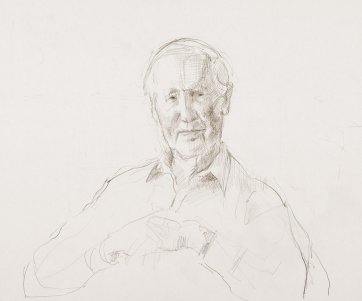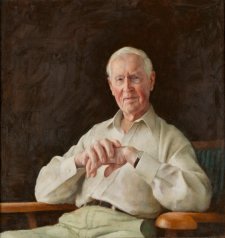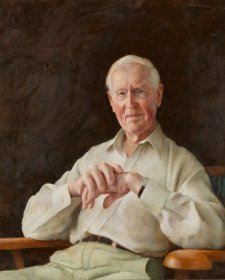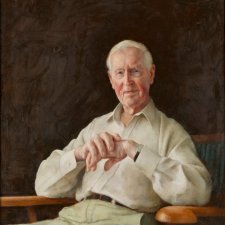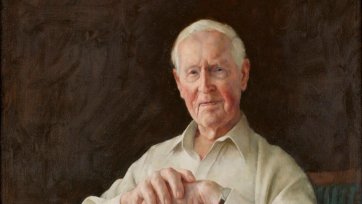Professor Frank Fenner: I think it’s a very good portrait of me. I think she’s got my personality as well as a physical resemblance. Painting a portrait involves a lot more than just taking a photograph. We talked at length. We always had a cup of coffee first and talked, and she was obviously trying to get my personality. I can’t describe my personality. That’s for other people to do, really.
She liked these chairs, and so she got an image of that.
Well, I’ve always worn a white shirt. I’ve got other ones. I’ve got two red shirts. If you look at that thing up there, that combination, that was my 90th birthday. Every representation of me there I think I’ve got a white shirt on. I’d be a bit cold without a sweater on, and my wife knitted it. People in those days, woman I think, they were just compulsive knitters. They’d sit down to talk and they’d be knitting with each other.
I haven’t seen it since its been mounted in the frame, but I’ll … of course I’ll look forward to it when the new portrait gallery opens. After I die, they’ll say, “Oh, that’s Frank Fenner. I’ve heard of him before. I think he was involved in something – what was it? Myxomatosis. And eradicating smallpox. That … they might think that.”
